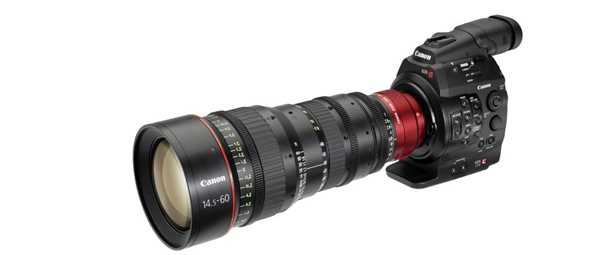We based our rankings on total page views across our U.S. and international viewership, grouping them by subject when the story spread out over several months (here’s looking at you, Final Cut Pro X). We give them to you now Late Show with David Letterman-style, counting down from 10 to the most read story at number 1.

The latest version of 3ds Max included many significant updates, and site visitors widely read Mike de la Flor’s review of Max 2012 to learn more about how those feature sets will impact the way they work. At the top of de la Flor’s list are the software’s new viewport, the importance of XBR to the Max workflow, and the new dynamics infrastructure, which he says rivals Maya’s Nucleus. However no support for Ptex in this version was a misfire, he noted.

Though published in November 2010, our comprehensive and early story about the emergence of Sony’s F3, an affordable camcorder with a Super 35mm-sized CMOS sensor targeting indie filmmakers, continued to draw eyeballs in February, when the camera began to ship, and much later. Commenters, including those from camera rental houses, debated the camera’s virtues and potential drawbacks compared to the cameras in RED’s arsenal.
8. Review: Blackmagic Design DaVinci Resolve for the Mac

The many readers of this review were no doubt curious if Blackmagic’s new software-only reboot of DaVinci Resolve-the much anticipated port of the once control-surface-only coloring system to Mac OS X-based software-was all it promised to be. Reviewer Scott Simmons, an editor, found the new version to be an amazing deal for the price with one caveat: “It’ll cost more than $995 to turn Resolve for the Mac into a usable realtime system in your suite.” He also didn’t like the fact that there was no multilayer timeline or Final Cut Pro XML support. That last part should have tipped us all off. By June, Apple had done away with XML support as we knew it in Final Cut Pro X (see number 6).
7. First Look: Canon EOS C300 Cinema Camera

Canon’s first camera aimed squarely at the professional filmmaker flew into view with a flurry of hype. Barry Braverman’s in-depth first look at the new Canon EOS C300 sought to make sense of the promised feature sets and put them in context. Curious shooters and several unconvinced commenters also weighed in.
6. Apple’s Release of FCPX: Before, During and After

Our three biggest FCPX stories began several months before the software’s official release with Scott Simmons’ first blog post, “Apple Wields Its Hammer, Smashes SuperMeet.” News and deatils of the release also ranked high, but not as high as this blog post, “Is Apple Listening,” about the way Apple was responding to the unrelenting negative feedback from its core user base. A review by Scott Simmons attempted to sort through the many workflow changes and new feature sets but still left readers with questions about whether or not to upgrade. Many more stories, which we hope addressed those questions, appeared in the following weeks. (You can visit the archive page with links to every Final Cut Pro X-related story we’ve posted.)
5. Review: Panasonic AG-AF100 Camcorder


What was it about this camera that made so many of you read our review? Performance for the price? Nino Del Padre’s review of Panasonic’s $4,995 Micro Four Thirds camcorder evidently appealed to users on a budget looking for a multitasking workhorse that shoots film-like images.
4. Senior VFX Supervisor Tim Burke Talks Harry Potter: No More Miniatures as CG Set Design Grows Up

As the Harry Potter franchise drew to a close, contributor Barbara Robertson sat down with Oscar-nominated senior VFX supervisor Tim Burke to discuss how more than the film’s stars have matured during 10 years of production. She also found out which shots, both in Harry Potter and the Deathly Hallows, Part I and in the previous six films, were the most difficult to pull off.

The King’s Speech was a major entertainment news story even before it secured 12 Oscar nominations and four eventual Academy Awards, including one for Best Picture. Our rare interview with the film’s nominated cinematographer, Danny Cohen, who shot on film with a wide variety of ARRI lenses, took a long look at the DP’s technique and his collaboration with director Tom Hooper, the set designer and the sparkling ensemble cast.
2. Review: Adobe Premiere Pro CS5: Mercury, Where Have You Been All My Life?

Yes, this story was posted during NAB in 2010. But our readers returned to Charlie White’s in-depth review of Premiere Pro CS5 in droves throughout 2011 as they considered upgrading and using the feature sets in Adobe’s revamp of its flagship NLE-even as they moved to CS5.5.
1. Environment Design 2010: A Round Up of Top Apps

One of the first big product round-ups we posted in the new year, Peter Plantec’s survey of the best environment design tools on the market appealed to a broad set of readers who create CG matte paintings with a range of digital tools. This story, in particular, drew many viewers from outside the U.S.

Did you enjoy this article? Sign up to receive the StudioDaily Fix eletter containing the latest stories, including news, videos, interviews, reviews and more.











Leave a Reply